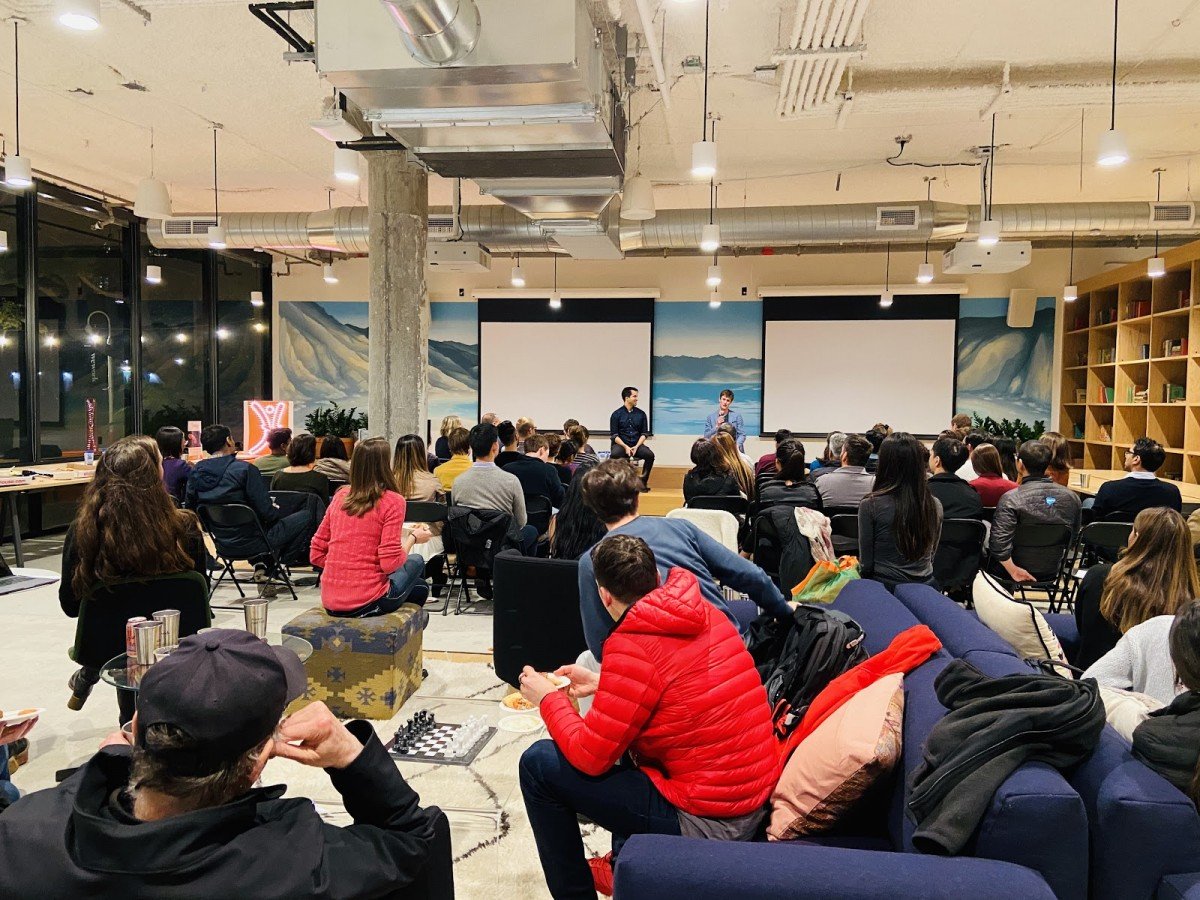GFI hosts fireside chat to advance protein innovation

How can entrepreneurs and innovators shape the future of food? Last week GFI, in partnership with WeWork’s new Food Labs, held an alternative protein community event in the San Francisco Bay Area that featured entrepreneurs, investors, scientists and engineers, academics, journalists, and others curious to peer into the future of food. The discussion aimed to help would-be innovators capitalize on white space opportunities in alternative proteins. We heard from some of the best in the business about their stories and recommendations for future entrepreneurs to get involved in the alternative protein space and transform the food system.
Learning from protein innovators
Sri Artham’s Hooray Foods, which served delicious plant-based bacon at the event, exemplifies the artful innovation that GFI hopes to create in the alternative protein space. Sri identified an unmet need in alternative protein—the lack of tasty and affordable bacon alternatives that can transform the $60 billion global market for bacon—and, in a matter of months, he went from R&D in his kitchen to securing a funding round and selling product to restaurants across the Bay Area.
Ryan Bethencourt, the expert who offered his insights for the evening’s fireside chat, zeroed in on a key white space: pet foods. If America’s dogs and cats were their own country, they would rank fifth in the world for meat consumption. His company Wild Earth has, to date, successfully raised millions of dollars and appeared on the hit show Shark Tank. During our conversation, Ryan shared his insights on lessons for future founders:
1. Start with the grocery store
Opportunities abound in alternative protein. When trying to find white space, Ryan suggested entrepreneurs look no further than the grocery store. He said, “Go down the grocery store aisle and you look at every single item. Start with milk: what’s the plant-based version? What’s the recombinant version? What’s the cell-based version? That is a framework for thinking about areas of white space for disruption. That’s what you should go after. Find your favorite product that is an animal-based product and do that grid.”
2. Think scalable, think collaborative
To meet the growing global demand for these products and fill the existing white spaces, Ryan noted that technology and innovation will play crucial roles in building scalable production capacity for alternative proteins. Take, for example, the bioreactors used to produce alternative protein products. He said, “There’s one obvious area here…bio-fermentation. So the tanks that we make these products, whether [the approach is] bacterial, whether it’s fungal, whether it’s cell-based, they all need to have different types of bioreactors. And this is something, this is a core platform that we could all share, right? We need massive innovation in this space.”
3. Just jump in
Expanding the alternative protein industry starts with innovators. In considering how to get involved in the space, Ryan suggested those interested should start simple. “Here’s a deep secret…you have to give yourself permission,” he said. “The problem is that we live in such a permission-based society that you often feel like ‘Well, who am I to do this? I’m not really that person.’ Why not? Try it. Do it.”
Growing the good food community
We at GFI believe that the likelihood of alternative proteins’ success as a market sector will be greatly increased by providing tangible directions for the future pioneers in this space, as well as creating spaces for collaboration and networking among high-potentials. We hope this event will serve as the first of many regular in-person alternative protein community events in the Bay Area that will explore topics salient to both the present and future leaders of the alternative protein industry—and also provide a delicious sneak-peek to the foods of the future.
Watch the full fireside chat here.

